The secret to championing inclusive education
How to inspire every student, with iPad accessibility features
Every child should be able to experience the magic of education.
But to bring truly inclusive learning to their classrooms, teachers need access to the right tech. Tech that not only inspires their students but supports their individual needs too.
With a suite of powerful accessibility features, iPad is the perfect choice.
In recognition of Global Accessibility Awareness Day, we wanted to celebrate the incredibly accessible iPad. So read on to explore some of the ways these adaptable devices can foster engaging learning for all.
iPad’s empowering accessibility features
VoiceOver
Industry-leading screen reader VoiceOver lets students explore their iPad with ease, offering audible descriptions or braille output (when used with compatible braille devices), of what’s happening on their screens.
Magnifier
Magnifier, with innovative Split View mode helps students enhance classroom details while making the most of their screen space. Students can use their iPad’s camera to magnify physical objects on one side of their screen, while taking notes on the other.
Live Listen
Assistive listening from Live Listen can help students focus in busy classrooms by putting them in control of their iPad’s audio. With the feature switched on, simply moving the device closer to a speaker will allow the inbuilt microphone to amplify their voice, sending it straight to the student’s connected wireless headphones or Made for iPhone hearing devices.
FaceTime
FaceTime can empower students that use sign language, providing them with a communication platform that uses high-quality video capable of capturing gestural nuances and changes in expression.
Voice Control
Voice Control allows students to interact with their apps on iPadOS using just their voice. By controlling their device with simple vocal commands, students can get streamlined access to their iPad’s features, helping them engage with lessons efficiently.
Switch Control
Switch Control allows students to use adaptive devices like joysticks or trackpads to navigate content and control their screens. And, with Sound Actions for Switch Control, they can also use clicks, pops and “ee” sounds to engage with their devices – helping them use their technology in a way that works for them.
Safari Reader
The online experience can be overwhelming. Safari Reader can help, by cutting down on superfluous buttons, ads, and navigation bars – meaning students can concentrate on the content, without distractions.
Speak Screen
Speak Screen can read the contents of a student’s screen aloud, helping to aid comprehension for those who find reading easier with accompanying audio. Speak Screen supports text from a variety of sources, including web pages, emails, and books.
Inclusive education, powered by iPad
Promoting inclusive learning with iPad is easy. Their intuitive OS makes them simple for students and staff to master, and with an affordable price point, they’re the perfect antidote to stretched IT budgets too.
Are you interested in learning more about how iPad can open up the world of education? There’s lots to explore. Visit our Apple accessibility page for more information.
Tidy desk, tidy mind. Four steps to a better working environment
Ten or twenty years ago, it was easy to picture a workspace. You’d have a laptop or desktop, a monitor or two, a keyboard and mouse, a phone and a couple of picture frames. That was your basic setup, and it served people well.
But times have changed. Nowadays, an office workspace could be a hot desk, or in a shared working space. At home, it could be a kitchen table, or it could be in a living room.
Above all else, what you find on a desk has changed dramatically. In the past, they could be cluttered, busy spaces with wires trailing everywhere. But this could have a significant impact on happiness, wellbeing and, as a result, productivity.
The perfect desk for modern working is usually free from clutter, so the user has space to think. It also needs to give them the flexibility to work how they want to. But how can this be achieved? Let’s take a look.

Add multi-tasking capabilities
If someone is using their own device, their desk needs to add capabilities, not just be a table to put their laptop on. The best place to start is the monitors. We believe that ultrawides are a fantastic option for business, as they offer so much more screen space without too much additional desk space. Add in simple features like USB-C connectivity and in-built biometric webcams, as you’ll find on the B-Series USB-C Docking monitors, and you’ve effectively boosted productivity and security without adding clutter.
Simplify connections
A keyboard cable, mouse wire, HDMI lead, power lead and ethernet cable. The basic desk setup has a lot of unsightly cables snaking across it. It’s time to fix that. A Philips USB-C monitor takes away the need for all those different cables. Connect a device and monitors via one USB-C cable, plug in the receiver for a wireless keyboard and mouse, and suddenly the desk is cable-free. It’s neater, it’s better looking and it’s more efficient too. Philips also has a range of monitors that have integrated docking capability which removes the amount of space taken on the desk even further.
Reduce strain
It’s no secret that some desks are not good for our physical health. They can lead to poor posture, back and neck pain and eye strain. Laptop and monitor risers, ergonomic keyboards and proper desk chairs are all effective ways of countering some of these problems, but don’t overlook the power of built-in blue light filters and anti-flicker settings within monitors. Used properly, people don’t tire as quickly, they’re healthier and they’re happier.
Cleaner desk, cleaner planet
The desk isn’t the only area with an increased focus on cleaning up at the moment. We all need to take steps to limit the impact we are having on the environment. That means lower power consumption and less waste. A cleaner, tidier desk likely has fewer items on it, which means less componentry and less waste. It’s also important to ensure any new products you buy are built to last, and ideally made to be as efficient and recyclable as possible.
What can we learn?
However you choose to work, the right setup can make all the difference. That means finding the right monitors and docks, and building your space around them. The Philips B Series USBC Docking monitors and a selection of the Philips E-line monitors could be the answer. They allow laptops and tablets to connect and charge using one USB-C cable, and can even be used as the central dock. That means fewer wires, easier cable management and less clutter.
And the key advantage of a less cluttered desk? Better working conditions and a tidier mind.
Learn more about Philips devices via XMA
Keeping up with the data demands
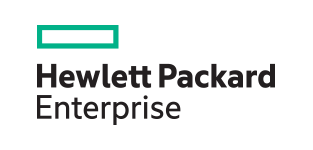
If you work with technology, you’ve probably read more than your fair share of articles and guides to digital transformation over the years. But knowing the end goal of effective digital transformation is one thing, making it real is quite another.
Of course, the key to making a success of digital transformation is your data. But deciphering an ever-increasing pile of numbers and usage statistics isn’t easy, and many analytics tools only quantify things, they don’t provide suggestions.
Of course, in order to keep up with changing needs and application potential, many businesses think the answer is to invest fully in the cloud. But is this the right answer for everyone? Your data requirements are far too dynamic and diverse. On-premises infrastructure is hard enough to manage on its own, and many cloud services simply aren’t optimised to do the job you need.
This is where AI comes in. By opting for AI-driven intelligence as a service, you can get the automated helping hand you need to optimise your cloud operations, continually stay current, and enjoy the benefits of a hybrid setup. Best of all though? You only pay for what you need.
The right solution needs to be capable of driving itself and fully automate your data infrastructure. That means identifying problems and fixing them, or predicting issues before they happen. It means pinpointing issues within your stack, such as underutilised or unnecessary assets, and it needs to take the guesswork out of your decision making. You need to have faith that the system is doing the right thing for your business, without you constantly having to steer it in the right direction.
At XMA, we recommend HPE Alletra for this. Why? Well, because it meets all of these requirements.
First off, it includes HPE InfoSight—the AI engine that has already eliminated over 1.5 million hours of downtime for users by predicting and preventing problems across the entire infrastructure.
Alletra’s close coupling to the Data Services Cloud Console is also an enormous advantage. It helps to deliver a common, cloud operational experience across all workloads, wherever they’re located.
And finally, when it’s coupled with HPE GreenLake, it enables you to access the best of cloud from your on-premises setup, with all the benefits of as a service.
With Alletra 6000 and 9000 available, these servers are the next step of the journey started by HPE Nimble and Primera. Capable of running any application you can think of without compromise, they’re an ideal upgrade for your business. They’re powerful, reliable and outrageously intelligent.
So, if you’re struggling to keep on top of your digital transformation journey, don’t worry. The machines can do the hard work for you.
Want to find out more about HPE Alletra? Click here.
Rubrik and XMA enhance Delt shared services
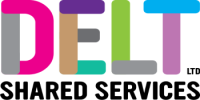
INDUSTRY
Public Sector – Local Government
LOCATION
UK
PREVIOUS CHALLENGES
– Data backups were stored on-premises and not immutable
– Labor-intensive backup process prone to increased risk of errors and security breaches
– Wanted to revolutionise their data protection capabilities with a cloud native vendor
SOLUTIONS WITH RUBRIK
– Sensitive Data Discovery reporting capabilities
– Built in ransomware recovery assurance
– Automatic critical backup operations free up valuable IT team resources whilst eliminating the potential for errors, security breaches and downtime associated with manual operations
– Automatic Cloud Native backups to encrypt data and produce immutable records that assist GDPR compliance
RESULTS
– Future-proofed IT service provision and eliminated risk of GDPR non-compliance
– Complete technology overhaul—bringing greater capacity, agility, resilience
Cloud or traditional infrastructure? Why not both?

Netflix, Microsoft 365, AWS. Cloud services have quickly become a crucial part of our everyday lives, both for work, and for entertainment. However, while many of us depend on cloud services every day, many businesses are still reluctant to switch their infrastructure to a purely cloud-based one. It’s an understandable concern. After all, we like to keep control of our precious data, not rely on others to do it for us.
But sticking to a traditional infrastructure setup does mean we miss out on some of the benefits of cloud. Namely, that ability to instantly upscale network capacity and storage space, as well as the advantage of being constantly up to date, not falling into obsolescence over time.
So, how can businesses take advantage of these features, without giving up their on-site servers entirely? Chances are, you’re already aware of the answer – by going hybrid.
A hybrid solution, such as HPE’s GreenLake, does exactly what you’d expect. It combines an on-site infrastructure with advanced cloud features, giving you the best of both. That means full control of your precious data, and simple management tools that are quick to adopt, as well as simple scalability and full support for hybrid and remote workers, without stressing your servers. It also stays relevant for longer, as the cloud element remains up to date at all times, while the on-site element will be supported for years to come.
So, if you’re facing frustrations or worries around your existing infrastructure, remember, an upgrade may not be as out of reach, or as hard to do, as you might think.
Speak to a member of our team to find out more.
How we work is changing. Should our IT teams be nervous?

Two years after the start of the pandemic, chances are you’ve settled into a new working routine. For a large number of us, that means skipping the commute, and working from our ever-improving home office setups.
However, behind the scenes at businesses, decisions need to be made. Can existing IT infrastructure properly support this new hybrid working norm, and how ready is it for future challenges that are yet to fully reveal themselves?
Some legacy setups simply weren’t built to handle the challenges of remote working, and while they can be made to work, they’re far from the most efficient or secure option out there, so if you’re relying on an older system, it might be time to consider a change.
Of course, changing a business’ infrastructure can feel a bit daunting. After all, those server units hold every scrap of precious data, and every member of staff connects to them every day to do their job. A long, drawn-out process to replace them is not in anyone’s best interest and may be the reason legacy infrastructure remains unchanged for many of us.
So, let’s go back to the initial question at the top of this blog: Should IT teams be nervous? The simple answer is no. That’s because modern hybrid infrastructures offer the ideal solution. They’re quick to implement, incredibly flexible, can grow as your business does, and offer the highest level of security available.
Our experience working alongside HPE has seen us install this powerful new infrastructure in a way that minimises, and even practically removes, any disruption your business might face.
So, if you’re ready to get started with hybrid infrastructure, and to enjoy the benefits afforded by greater control and flexibility, it’s time to speak to a member of our team. There really is nothing to fear.
Why Surface is made for modern policing
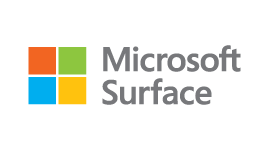
By Bruce Daniels
Defence Business Development Director
Specialising in Defence and National Security Organisations
As society itself has become more technologically sophisticated, the environment in which police operate has altered too. Crime is changing, citizens are more connected and media scrutiny demands instant answers – all while funding has declined and support teams have had to learn to work remotely.
Police need tech that can keep up. That can adapt to flexible ways of working, boost productivity and respond to change as a whole.
And that’s not all. Security and sustainability are also at the top of the list when choosing IT. Plus, any new investment needs to be easily integrated into the systems and processes that already exist – increasing efficiencies while decreasing frustration.
It sounds like a lot to ask. But it’s achievable when you put the right devices into people’s hands – and there’s one particular device that ticks all the boxes.
Devices designed to perform
Microsoft Surface devices are made for modern policing. And part of their appeal is adaptability – a range that matches different needs in different environments.
The requirements of police officers working out in the field can be met with a device such as the Surface Pro 8, a lightweight 2-in-1 that provides laptop performance with tablet flexibility.
Desk-based activities can be completed with the Surface Laptop 4, powerful devices with cutting-edge processors. And the general need for flexible, agile working can be taken care of with accessories such as docks, adapters and Teams certified audio accessories.
Crucially, users also get real-time data accessibility and can connect from anywhere with LTE devices, giving the information and connection to colleagues at their fingertips.
But this flexibility and connectivity doesn’t come at the expense of power. With Surface, you get fast RAM, modern chipsets and all-day battery.
For example, users of the Surface Go 3, the lightest and most affordable device in the range, benefit from a fast Intel® Core™ Processor, the full version of Windows 11 and an 11-hour battery life.
All of this is backed up by a range of accessories designed to transform the ultimate policing PC into a rugged mobile solution made for many different types of police work.
In fact, with a wide range of products to choose from, most of which you can find on our website, Surface devices will suit any need a police service might have.
Simplicity and security
Another plus point of Surface is how easily it can be integrated with Microsoft apps and police software and programs. This can really make the difference between disjointed experiences that cause friction and impact efficiency and a seamless user experience that’s simple, familiar and effective.
This simplicity factor is important for deployment too. Police officers and support staff ideally want to get devices that are ready to go, straight out of the box – and that’s why Windows Autopilot is so handy.
Simply unbox and turn on a Surface device – Windows Autopilot will configure it from the cloud in a few steps. It’s incredibly hassle-free.
Now, it goes without saying that security features are hugely important on any device that’s used as part of police work. Officers and support staff need to maintain control over their data, keeping it safe from interception, while keeping threats such as malware well away from their devices.
This is where Modern Device Management adds support and protection to Surface, through:
Intune: Offering full control over devices, including settings, features, and security. Devices and users of these devices “enrol” in Intune. Once enrolled, they receive your rules and settings through policies configured in Intune, which also offers the ability to decommission or remote wipe a device if it’s stolen or lost. With these features, Intune simplifies the management of mobile devices, and ensures they’re constantly up to date, secure and available, without needing to get hands-on.
Windows Hello: Giving users the ability to log in to devices using a fingerprint, iris scan or facial recognition, Windows Hello is biometric unlocking that’s user-friendly, secure and reliable. It enables users themselves to be the password rather than them having to remember passwords or write them down. It’s also easily set up via sign-in options.
BitLocker: BitLocker Drive Encryption is a data protection feature that integrates with the operating system and addresses the threats of data theft or exposure from lost, stolen, or inappropriately decommissioned computers.
Microsoft Defender: Microsoft Defender Antivirus is a free real-time malware protection feature pre-installed in Windows 10. Bloatware free and built into the core operating system, it’s activated by default if no other active antivirus software is detected, and automatically activates when third-party antivirus protection is disabled.
As more and more police services move to modern cloud management systems, technology that integrates seamlessly with it, like Surface devices do, will become invaluable for effective policing.
Responsible sustainability
Organisations in both the public and private sectors are placing a higher and higher value on sustainability, and policing is no exception. It’s therefore good to know that Microsoft is leading the way in tech sustainability, which means another tick in the box for Surface.
The Surface range represents technology that meets rigorous eco-standards across the entire lifecycle, including through improved energy efficiency and extended battery life. Microsoft is also increasing its use of recycled materials and has committed to 100% recyclable packaging and Surface devices by 2030.
Surface for policing, with XMA
Easy integration. Performance, productivity and collaboration. Enhanced user experiences. Secure, sustainable and simple to deploy and manage.
When you list the ways in which Surface can benefit policing, it makes it worthwhile finding out more. And that’s where we come in.
XMA is a Microsoft Surface Gold Partner, and our Microsoft-accredited experts will work with your organisation to design best fit solutions. We also have strong levels of stock, so there’s no need to wait several months to roll out your new solution. We can get it to you quickly and effectively.
Want to know more? Click here
XMA support contributes to Teesside University securing Apple Distinguished School status
As a strong believer in advancing education techniques and standards, Apple created the Apple Distinguished Schools (ADS) programme to highlight centres of excellence and innovation at every level of education.
Achieving an ADS accreditation is no easy task. In fact, no whole university in the UK has held the coveted accreditation. Teesside University set out ambitious plans through its Future Facing Learning strategy to change this.
With support and guidance from XMA, Teesside was able to deploy over 6,000 iPads to lecturers, along with a training plan to develop its staff into accredited Apple Teachers through weekly remote learning sessions, made essential by Covid restrictions.
This new status recognises Teesside University as one of the world’s most innovative institutions when it comes to the implementation of Apple learning technology.
As an Apple Authorised Education Specialist, XMA was ideally placed to support Teesside’s ambition. XMA has also assisted education establishments at all levels of education, including St John Paul Primary School and Castlemilk High in Glasgow, St Cyres School in Penarth and Tynecastle High School in Edinburgh.
“Our students challenged us to think differently,” says Professor Mark Simpson, Pro Vice-Chancellor (Learning and Teaching)
“Teesside University students are innovative, ambitious, creative and entrepreneurial. They break the mould.”
The university’s Future Facing Learning Strategy aims to deliver a differentiated educational experience that is truly forward looking, rather than fitting pre-defined expectations around teaching and learning.
Teesside University sought to better enable students and educators to work together as peers, remove geographical barriers and improve accessibility.
The investment in Apple technology “takes learning out of the classroom and makes it part of everyday life.”
“By placing technology at the heart of the learning model, we have been able to transform the way we teach and the way our students learn.
“Teaching staff are encouraged to experiment and to try new approaches. Apple technology has empowered teaching staff to think differently.” Says Professor Mark Simpson, Pro Vice-Chancellor (Learning and Teaching).
The technology now allows Teesside University students to access learning resources and content whenever and wherever it suits them, which has proved invaluable as the education world at large has embraced hybrid learning.
During the implementation of this technology platform, Teesside University staff discovered that the devices need to become integral to all aspects of the institution, not just the classroom, and that appropriate training and skill-building across the university must be a focus.
Because of this, the university is developing digital solutions for wider collaboration and remote working, as well as for student support and wellbeing services.
“We feel that Future Facing Learning is having a transformative impact at Teesside and we’re keen to share this and see others learn from our experience.
“Hopefully [this status] will help others easily identify Teesside as a beacon of best practice and a critical friend in supporting others to devise digitally driven transformation.”
XMA are a supplier of Apple technology and services through the HEPCW National Framework Agreement. The framework agreement is built around the supply of products using Apple Native Operating Systems, Associated Accessories and Services.
XMA re-awarded position on Apple Framework through the Higher Education Purchasing Consortium Wales (HEPCW)
XMA have been named one of the successful suppliers regaining their position on the National Framework Agreement for Apple products and services.
The framework agreement is built around the supply of products Using Apple Native Operating Systems, Associated Accessories and Services.
This Framework Agreement seeks to establish an effective supply channel for the provision of Apple manufactured equipment utilising the Original Equipment Manufacturers (OEM) operating systems (currently MacOS, iPadOS, iOS and Watch OS) and any future additional proprietary operating systems which may be implemented during the period covered by the Framework Agreement. The agreement is available to any universities that are members of one of the participating UK Universities Purchasing Consortia (UKUPC).
XMA are an Apple Authorised Education Specialist whose knowledge and expertise have seen us providing Apple technology solutions for higher education for many years. By purchasing Apple technology through XMA you can:
- Access a range of value-added services
- Take advantage of special education pricing
- Enjoy a minimum three-year warranty on all OSX and iOS devices
- Relax knowing that we’re a supplier capable of integrating with institutional e-procurement solutions
Mark Bailey, Head of Higher Education at XMA had this to say:
“We are delighted to have been selected to partner the Higher Education Purchasing Consortium Wales for the provision of Apple technology and services. We are dedicated to provide the best value and service to the education sector and are able to achieve this by working collaboratively with organisations such as HEPCW. We are committed to providing an enriched procurement experience for institutions, staff and students. XMA provides compelling experiences that attract students and support new ways of learning.”
The new agreement went live as of the 1st November 2021. Find out more about XMA and Apple in higher education here Apple in Higher Education | XMA
5 ways iPad can enhance care home experiences
In residential care, face-to-face engagement is vital for wellbeing. But, over the past year, it’s sadly become all but impossible for families to visit and for normal activities to take place.
To help care home residents live their best lives in care and stay connected with their loved ones throughout the pandemic, NHSX recently rolled-out 11,000 iPads and support packages to qualifying homes across the country1.
But iPad isn’t just for emergencies – having access to these user-friendly, high-performance and secure mobile devices can really make the difference between a good care home experience and a great one.
With an intuitive interface and an expanding library of apps offering everything from health monitoring to gaming, iPad helps improve the experience of care home residents and assists staff to provide care more effectively.
There are many more reasons why all residential care facilities should consider investing in shared iPads. Here are just a few:
Connect with loved ones
There’s no denying that the COVID-19 pandemic has exacerbated isolation and loneliness. Being able to use apps such as FaceTime and iMessage for video calls and messaging provides a vital lifeline for residents and their families. The portability of the iPad means that staff and residents can use them from anywhere – from the bedside, the garden or the point of care. SIM-enabled models allow iPads to be used outside WiFi range.
Staff should look to undertake training on privacy and security protocols when first using iPad. The Apple specialists at XMA can assist with this training, as well as ongoing support to help users get the most out of their iPad.
Attend medical appointments from anywhere
Just as video conferencing can be used to stay in touch with family and friends, it can also be used to contact doctors and other healthcare providers. If it is impossible for these professionals to visit the care home personally or for the resident to travel to a clinic, video appointments can serve as a good alternative.
The beauty of using shared iPads for this is that care and advice can be provided at the convenience of the user. Information could then be sent straight to the device during or after the call.
Instant access to information at the point of care
Specifically designed apps on iPad allow doctors, nurses and care staff quick and secure access to patient records, wherever they may be working. In a care home environment, this can ensure that everyone is given their prescribed medications correctly. iPad apps can also help staff keep detailed and accurate notes as they work.
Health data is secured when downloaded over an encrypted connection, and never transverses Apple’s network, meaning staff and residents retain control over their data. Users are further protected by biometric security features like Touch ID, as well as regular updates and built-in safeguards that ensure both third-party and Apple apps only access data when authorised.
Bring fun and games into care
Applications can help care home residents get more out of their stay.
For example, creative apps from Apple and third-party sources can allow users to create and enjoy music or art (for example, GarageBand and Apple Books). Such apps can make all the difference to someone with limited movement or access to materials. iPads can also be used for games and entertainment, becoming sources of comfort and communal activity.
Third-party applications like Cove and Thrive have been designed to support aging patients who might be living with dementia, anxiety or other related conditions, improving quality of life.
Access NHS information
With the iPad, staff can stay up to date with NHS information, perhaps the most important of which is the secure internal service NHSmail.
We’ve seen how important access to information has been over the past year. iPad allows teams to collaborate and coordinate, ultimately providing a better experience for residents and an easier workday for staff.
Deploy devices to best practice with XMA
We know every care home is different, with its own challenges, culture and ways of working. We also know how important it is to give residents all the benefits of modern technology to make their time in care more comfortable and engaging.
That’s why our Apple device services – from deployment and configuration to device refresh and BuyBack – are all designed with your needs and best-practice in mind. The potential of iPads in a care setting is huge.







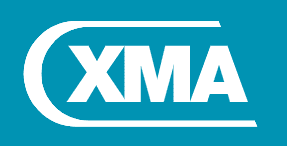

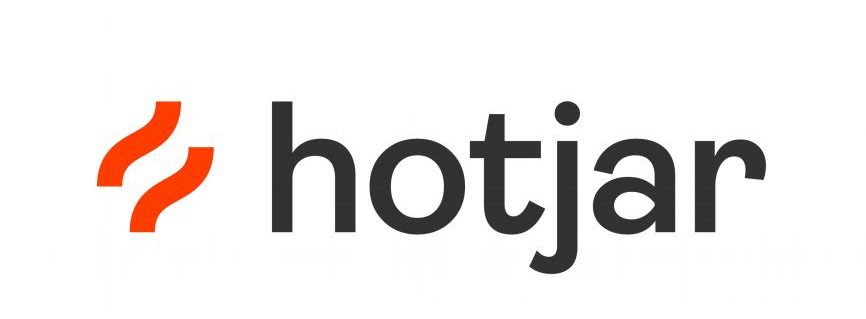 Monitoring by Hotjar
Monitoring by Hotjar